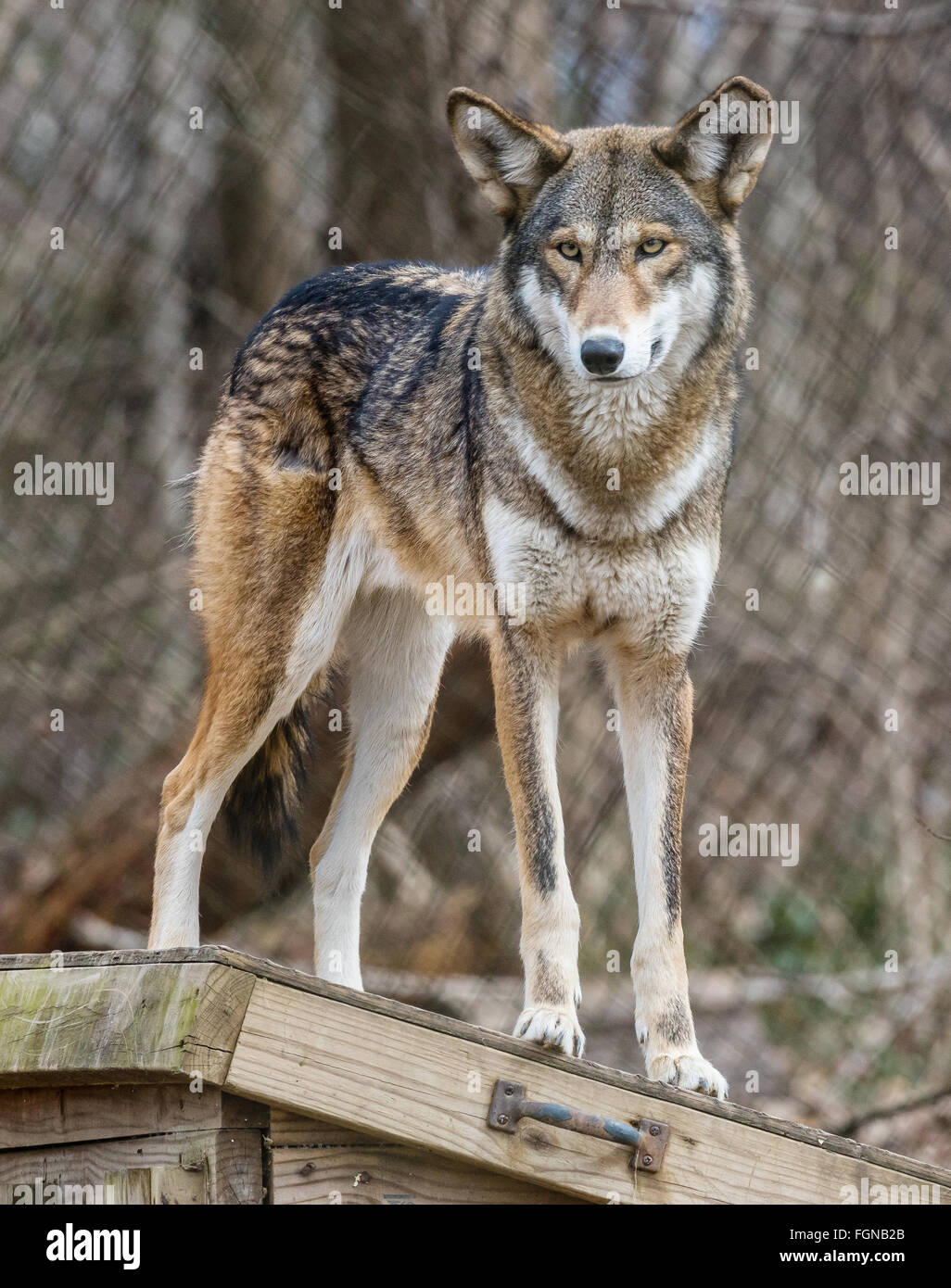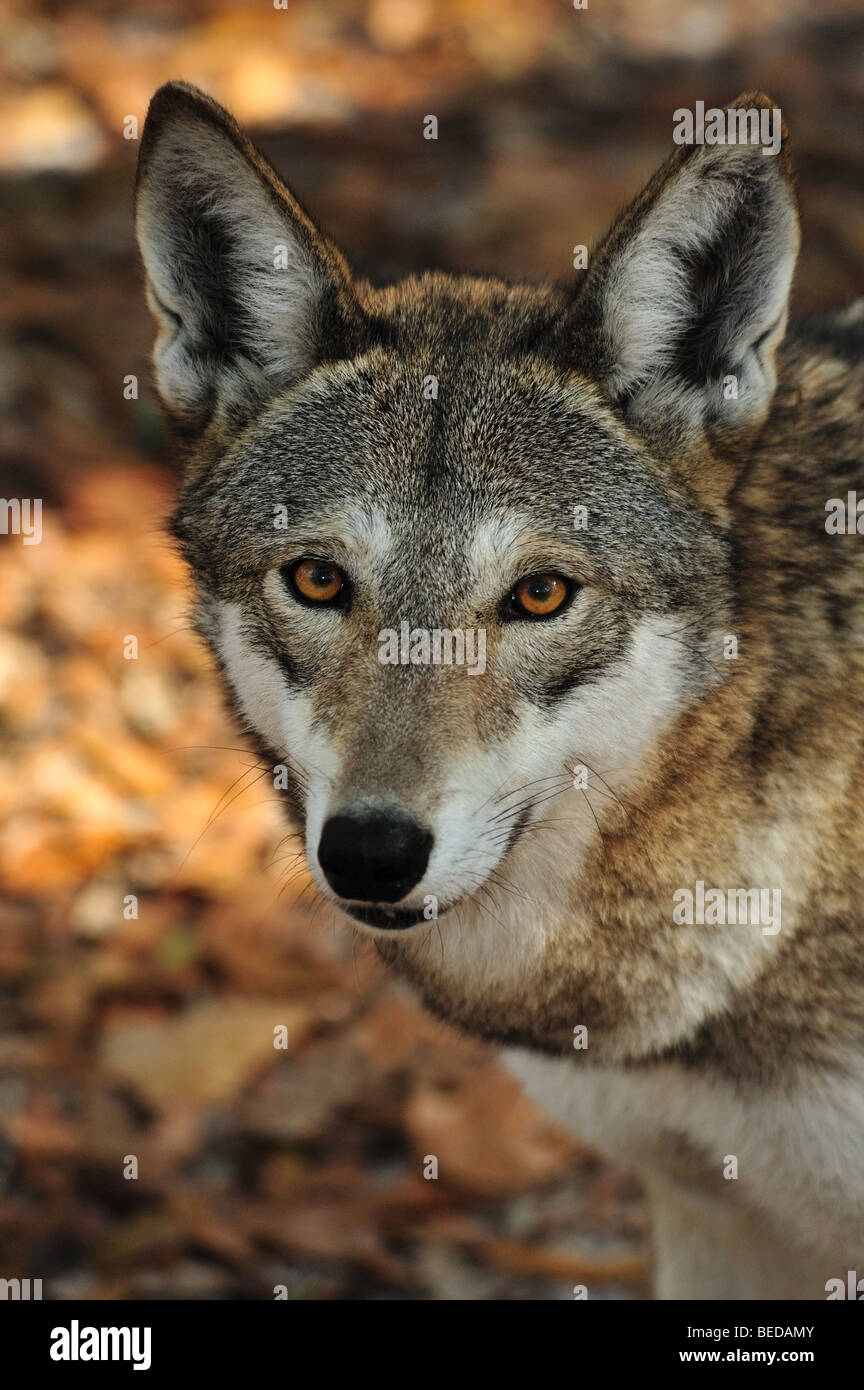


Alsatian Shepalute's: A New Breed For A New Millennium. Brevard County, Florida: A Short History to 1955. Elsevier's Dictionary of Mammals: In Latin, English, German, French and Italian. ^ " Canis rufus floridanus | Miller, 1912".5 It once roamed the regions in and around the lower Mississippi River basin. Mammal Species of the World: A Taxonomic and Geographic Reference (3rd ed.). Gregory's wolf ( Canis rufus gregoryi ), 3 4 also known as the Mississippi Valley wolf, 2 was a subspecies of the red wolf. Proceedings of the Biological Society of Washington. "THE NAMES OF TWO SOUTH AMERICAN WOLVES". By 1920, the red wolf had been extirpated in most of the southern states, and by 1970. In 2022, the population was down to just 8 known wild wolves. Unlike gray wolves, red wolves faced an imminent threat of extinction. Fish and Wildlife Service estimated the population to be between just 50 and 75 individual s. The wild population steadily grew until 2006, when it reached its peak at 130 wolves, but then it began declining again - very rapidly - in 2014. In 1987 four captive pairs of red wolves were released in the Alligator River National Wildlife Refuge in Dare County in northeastern North Carolina. POPULATION TREND: Red wolves were declared extinct in the wild in 1980. THREATS: Red wolves are threatened by habitat loss illegal killings and other human persecution and hybridization with coyotes. WHEREAS, through a combination of predator control, habitat disturbance, encroaching human populations, and finally, hybridization with the coyote (Canis. It is thought that the Red Wolfs original distribution included much of eastern North America, where Red Wolves were found from Pennsylvania in the east, Florida in the south and Texas in the west. Wolves may travel as far as 20 miles within their territories to find prey, and they may consume 2 to 5 pounds of food daily. The Red Wolf (Canis Rufus) is the rarest and most endangered of all the wolf species. LIFE CYCLE: Red wolves live for six to seven years in the wild.įEEDING: Red wolves most often hunt small mammals, such as rabbits and raccoons, but they will occasionally hunt deer. Packs may range in size from five to eight individuals, normally made up of the breeding pair and their offspring from different years. Wildlife biologists believe the red wolf ( Canis rufus) to be extinct throughout most of its range with the only exception being the managed population at The Red Wolf Recovery Program of the United States Fish and Wildlife Service in North Carolina ( Hinton et al., 2013 ). Red wolves typically mate for life, and their familial “packs” are formed around a breeding pair. Pups are well hidden in carefully selected dens while they are young and vulnerable. The gestation period lasts for about 60 days, and females give birth to litters of two to six pups on average. Now they occur only in five counties of northeastern North Carolina: Dare, Hyde, Tyrrell, Washington and Beaufort counties.īREEDING: Red wolves reach sexual maturity at around three years old and mate from January to early March. RANGE: The red wolf was once widely distributed throughout the southeastern United States from the Atlantic and Gulf coasts, north to the Ohio River Valley and central Pennsylvania, and west to Central Texas and southeastern Missouri. Captive Breeding Breeding animals in such places as zoos.

Some scientists have proposed that the eastern wolf, Canis lupus lycaon is a distinct species, Canis lycaon. Two recognized species of wolves live in North America Canis lupus and Canis rufus. Its size is intermediate between the coyote (Canis latrans) and gray wolf. Canis rufus The scientific name for the red wolf. HABITAT: Red wolves appear to be habitat generalists, given their wide historical range, but they currently occupy the swamps, forests, wetlands and bushlands of northeastern North Carolina. The red wolf (Canis rufus) is a canine native to the southeastern United States. They have more of a lanky appearance than gray wolves, with longer, thinner legs. Their fur is tawny to grayish in color and thinner than gray wolves' fur, with light markings around their lips and eyes. DESCRIPTION: Red wolves are smaller than gray wolves but larger than coyotes. The eastern wolf ( Canis lycaon 5 or Canis lupus lycaon 6 7 or Canis rufus lycaon) also known as the timber wolf, 8 Algonquin wolf or eastern timber wolf, 9 is a canine of debated taxonomy native to the Great Lakes region and southeastern Canada.


 0 kommentar(er)
0 kommentar(er)
